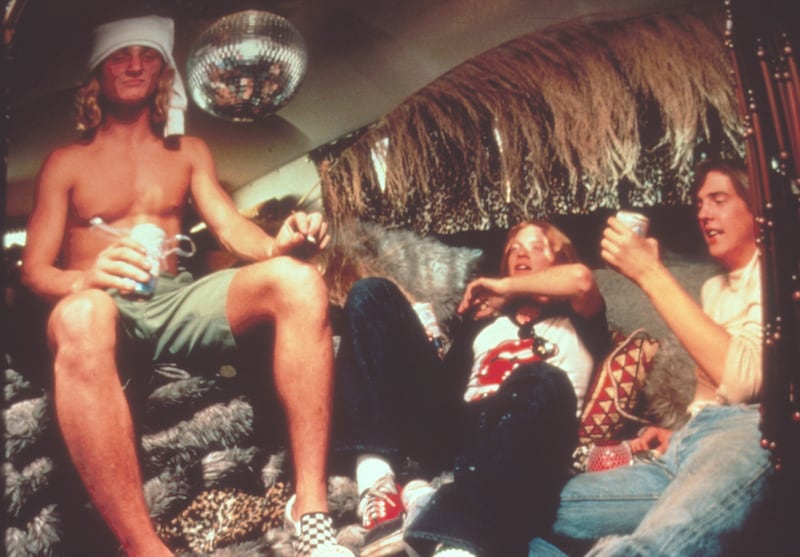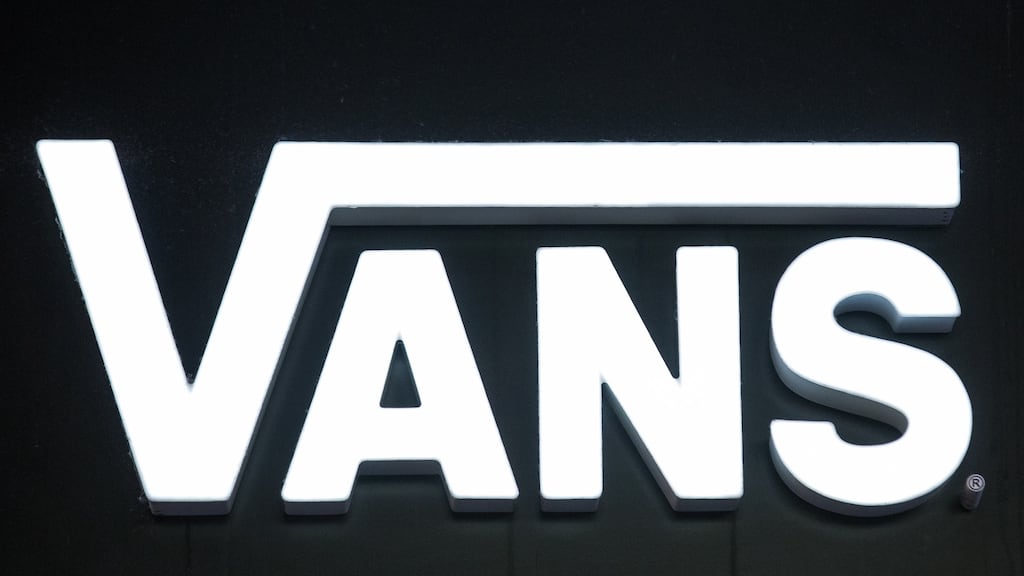There's a scene in Fast Times at Ridgemont High where Jeff Spicoli (played by Sean Penn) opens a box of slip-on checkerboard Vans sneakers in his bedroom. He proceeds to repeatedly smack himself on the head with one of them, before realizing, "That was my skull! I'm so wasted!" The shoes scarcely leave his feet for the duration of the movie, becoming such an integral part of the anti-hero, the quintessential high school stoner, that they take up the entire cover of the soundtrack album.
Many of the recent obituaries for Paul Van Doren, co-founder of Vans, cited the 1982 film as the moment when the brand made a lucrative jump from underground cool to mainstream staple. An upstart company dreamt up in a fit of pique at a former employer, it is now worth more than $4 billion (€3.3bn) and has been the preferred shoe of skateboarders, surfers, and rock musicians for more than half a century. Van Doren's death from kidney failure earlier this month, at the age of 90, marked the passing of the counter cultural Phil Knight, the founder of Nike.
It's difficult to imagine Knight taking one of Jackson Browne's snakeskin jackets and converting it into a sneaker. Or doing the same for Weird Al Yankovic using hair harvested from a troll doll. Then again, Van Doren was cut from different cloth. A native of Massachusetts and the son of an inventor, his first love was the horse track where, at 13, he was known as Dutch the Clutch for his sophisticated odds-breaking system. He left school not long after that, figuring to turn a buck somewhere between the ponies and the pool hall where the house bookie used to front him $10 a game knowing he was certain to deliver.
Those grand plans were rudely interrupted when his mother forced him to take a job sweeping the floor at Randy's Rubber Company. Over the next 20 years, he rose through the ranks at what was then one of America's largest shoe manufacturers and was eventually dispatched to California to fix their west coast operation. After a dispute with ownership, he decided to go out on his own. With three partners, including his younger brother Jim, his idea was a factory out back making shoes and a shop out front selling them. For a man who liked to gamble, just another punt.

When the Van Doren Rubber Company opened a store in Anaheim in 1966, he didn't know much about retail. The first customer handed him a $5 bill to purchase a pair of sneakers costing half that and, suddenly, he realized he didn't have any change in the till. So, he told the woman to take them home and pay him later. And then he did the same with more than a dozen others throughout opening day. Each one subsequently came back and handed over the money. The kind of loyalty the Vans brand, with annual sales now north of $2 billion, has inspired ever since. There were lessons learned too just from watching the shop floor.
“I had never realised that the mom is really the boss of the family,” wrote Van Doren in his memoir “Authentic”. “Mom is almost always the one who decides when, where, how, and everything else about shopping for the family. This changed my entire perspective on our core market. I had to get more moms…We just kept sewing our shoes with moms in mind-that’s what we did, for years and years and years.”
In the beginning, Vans were an almost exclusively Californian phenomenon, the chosen footwear for the first generation of skateboarders coming out of fabled Dogtown, attracted by thick soles that helped them better grip their boards, reasonable prices, and a welcome on the mat. At a time when most people still regarded skaters as a public nuisance, forever clambering over backyard fences and dropping into empty swimming pools, Van Doren offered the renegades a safe space. He also picked their brains for ways to improve the product, such as adding more padding around the ankles, and agreed to sell the hard-up teens one shoe at a time because their back feet always wore out quicker.
If the association with a burgeoning street sport made their shoes impossibly hip, they carved out another niche by custom-making runners people could afford. After watching what Mark Spitz did for Adidas by holding up a pair of Gazelles at the Munich Olympics, Van Doren revised his policy of never spending on advertising. He started to give the best skateboarders free Vans and eventually paid Stacy Peralta, a pioneer in the game, a whopping $300 to wear them as he toured the world.
He also sponsored in-house skateboarding and BMX teams and surfing contests, and then came Sean Penn's personal decision to wear checkerboards as part of Spicoli's outfit. That pop cultural moment doubled revenues but ended up nearly killing the company after it branched out into basketball, baseball and running in a doomed effort to compete with Nike. Having stepped away to breed racehorses, Van Doren returned to lead the recovery from bankruptcy before selling on for $75 million in 1988, and Vans, now part of the VF conglomerate that also owns Timberland and The North Face, have not been made in America since 1993.
Paul Van Doren is survived by five children, 10 grandchildren, 10 great-grandchildren, a brother, a sister, and his shoes that still adorn skateparks the world over.












